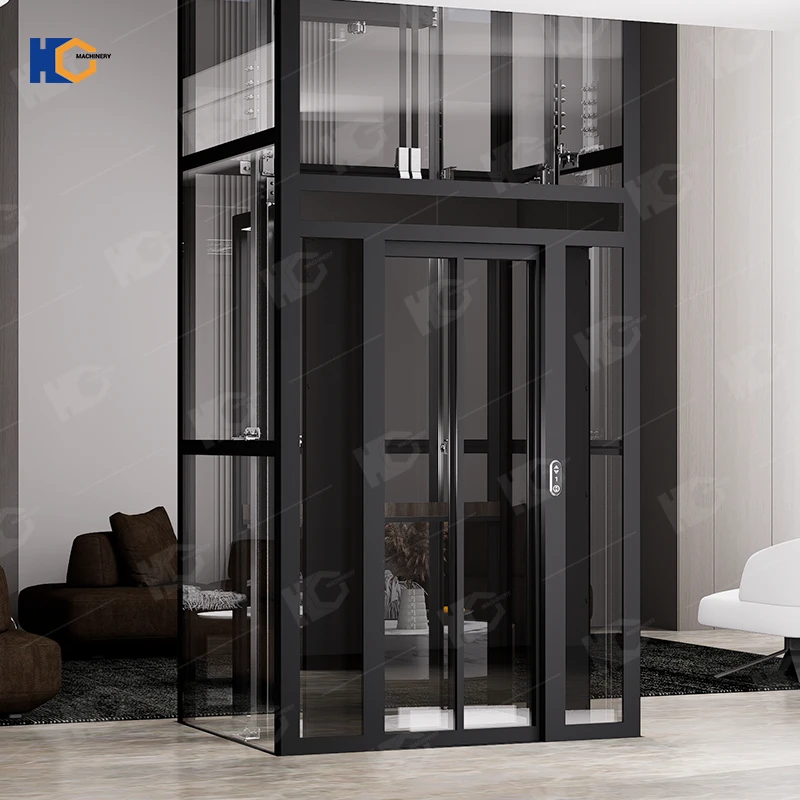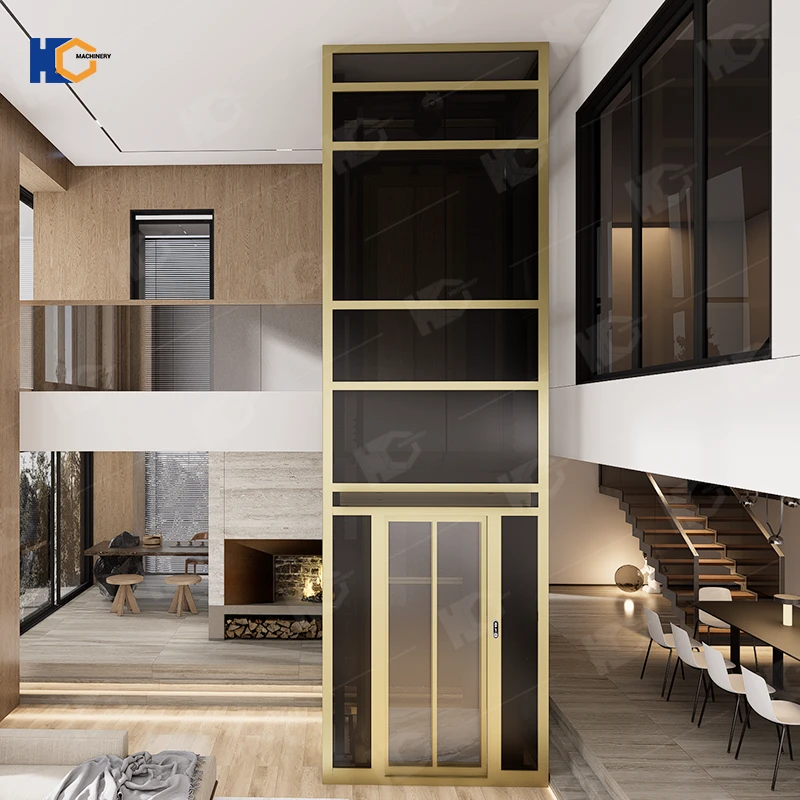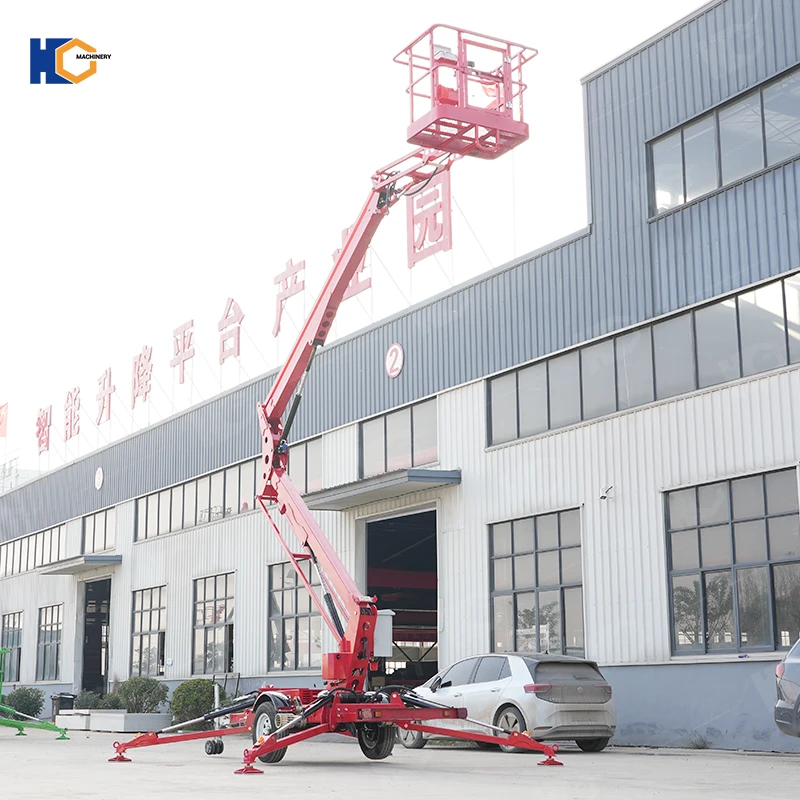In industrial, construction, and aerial work sectors, manlifts and scissor lifts are two widely used aerial lifting platforms. While both serve to elevate personnel or materials to specific heights, their design principles, applications, safety features, and costs differ significantly. This article provides a detailed analysis from technical specifications, use cases, safety performance, and economic efficiency to help users select the right equipment for their needs.
325942.webp)
I. Definitions and Classifications
1. Manlift
A manlift (or aerial work platform) is a powered device designed to vertically or horizontally elevate workers or materials to access elevated workspaces. It serves as a critical tool in industries requiring temporary height access, combining safety, mobility, and adaptability.
The term "manlift" broadly refers to aerial lifting devices that operate through mechanical structures for vertical or near-vertical movement. Key types include:
Scissor Lift: Uses crisscrossed hydraulic arms ("X"-shaped supports) to drive vertical platform movement.
Mast Climber: Relies on stacked mast sections for incremental vertical lifting.
Articulating Boom Lift: Features hinged arms for multi-angle tilting and horizontal reach.
Key Applications
Construction: Interior fit-outs, scaffolding alternatives.
Warehousing: Ceiling installations, stock management.
Utilities: Power line repairs, pipeline inspections.
Events: Stage setups, exhibition assembly.
Advantages
Cost-Efficient: Cheaper than cranes for short-term tasks.
Mobility: Wheeled/tracked models enable easy relocation.
Safety: Guardrails, anti-tip systems, and emergency controls.
Limitations
Height Caps: Most models max out at 20 meters (65 feet).
Environmental Impact: Fuel-powered variants emit fumes; electric models require charging.
Training Needs: Operators must avoid overloading or unstable terrain.
Manlifts are indispensable for safe, efficient elevated access, with choices tailored to task-specific needs. Prioritize type, height, and environmental factors when selecting the right equipment.
2. Scissor Lift
A scissor lift is a type of aerial work platform designed to vertically elevate personnel or materials to specific heights. It is widely used in industrial, commercial, and construction settings due to its stability, simplicity, and adaptability. The defining feature of a scissor lift is its crisscrossed hydraulic arms (often called "scissor arms"), which form an "X" shape and provide mechanical advantage for lifting.
Key Features and Design
The core mechanism consists of multiple layers of steel arms arranged in a crossing pattern. Hydraulic cylinders push these arms apart to raise the platform or retract them to lower it.Platforms are typically rectangular, with guardrails for safety, and some models include guardrails that can be lowered for easier entry/exit.
Most scissor lifts are mounted on wheeled bases for easy maneuverability indoors or on flat outdoor surfaces. Electric-powered models are preferred for indoor use due to zero emissions, while diesel or gas engines are common for outdoor applications.
Scissor lifts generally operate between 6–15 meters (20–50 feet), with industrial-grade models reaching up to 20 meters (65 feet).
They are built for heavy-duty tasks, with maximum payloads often exceeding 450 kg (1,000 lbs), making them ideal for transporting tools, equipment, or teams.
Applications
Scissor lifts are favored in scenarios requiring vertical mobility without horizontal reach. Common uses include:
Indoor Maintenance: Ceiling installations, HVAC repairs, and electrical work in warehouses or offices.
Construction: Interior fit-outs, scaffolding alternatives, and material handling.
Retail and Events: Stock management in warehouses, stage setup, or exhibition booth assembly.
Advantages
Stability: The crisscrossed arm design provides a low center of gravity, reducing tipping risks even under heavy loads.
Cost-Effective: Generally cheaper than articulating boom lifts, with lower maintenance costs due to simpler mechanics.
Versatility: Compatible with various terrains (via wheel or track options) and suitable for both indoor and outdoor use.
Limitations
Horizontal Mobility: Unlike boom lifts, scissor lifts cannot extend horizontally or maneuver around obstacles.
Platform Size: Work areas are smaller compared to taller lifts, restricting movement during elevated tasks.
Safety Considerations
Modern scissor lifts include overload sensors, emergency stop buttons, and anti-tip mechanisms.
Operators must ensure the platform is on stable ground and avoid exceeding weight limits.
Scissor lifts are a reliable solution for vertical lifting needs where stability, payload capacity, and simplicity are prioritized. While they lack the reach of other aerial platforms, their efficiency in confined spaces and cost-effectiveness make them indispensable in industries ranging from construction to logistics.
311291.webp)
II. Structural and Operational Principles
1. Manlift (Scissor Lift Example)
Mechanical Structure: Layered crisscrossed steel arms ("X"-shaped) driven by hydraulic cylinders for vertical motion.
Movement: Primarily vertical lifting; some models include rotating bases for minor horizontal adjustments.
Power System: Electric or fuel-powered hydraulic pumps. Electric models are quieter, while fuel-powered variants suit outdoor environments.
2. Other Manlift Types (e.g., Articulating Boom Lift)
Mechanical Structure: Multi-jointed telescopic arms with a rotating platform.
Movement: Extends horizontally and tilts at angles (e.g., 60°–90°), ideal for complex terrains (e.g., rooftops, walls).
Power System: Typically diesel engines for high power but higher noise and emissions.
III. Core Performance Comparison
1. Load Capacity and Stability
Scissor Lift:
Strengths: High stability due to crisscrossed arms; max load up to 450 kg (e.g., JLG 1930R), suitable for heavy equipment or team operations.
Limitations: Narrow platform size; limited horizontal reach (<1.5 meters).
Articulating Boom Lift:
Strengths: Larger platform (≈1.5×1.2 meters) for precision tasks (e.g., light installation, curtain wall maintenance).
Limitations: Lower max load (≈250 kg); requires anti-tilt safeguards when angled.
2. Working Height and Flexibility
Scissor Lift:
Height: 6–15 meters (industrial models up to 20 meters).
Limitations: Vertical-only movement; cannot bypass obstacles.
Articulating Boom Lift:
Height: 10–40 meters (telescopic models exceed 50 meters).
Advantages: Tilts to bypass obstacles (e.g., trees, fences).
3. Mobility and Environmental Suitability
Scissor Lift:
Indoor Use: Wheel-based design for flat surfaces; electric models produce no emissions.
Limitations: Difficult to maneuver in narrow spaces; platform extensions prone to collisions.
Articulating Boom Lift:
Outdoor Use: Equipped with tracks or rugged tires for slopes/mud.
Limitations: Large footprint when extended; requires ample space.
IV. Safety Analysis
1. Scissor Lift
Anti-Tip Design: Low center of gravity + wide base; resists wind up to 12级 (typhoon force).
Safety Features: Overload alarms, collision sensors, emergency descent.
Risks: Insufficient guardrail height (some models <1 meter) increases fall risks.
2. Articulating Boom Lift
Dynamic Stability: Prone to tipping during angle adjustments; requires gyroscopic/hydraulic balancing systems.
Redundancies: Dual hydraulic locks, anti-sway arms in high-end models.
Common Accidents: Over-speed turns, ground subsidence under outriggers.
V. Economic Comparison
1. Purchase Costs
Scissor Lift:
Price range: 520,000 (brand/configuration-dependent).
ROI: High for frequent, fixed-location use.
Articulating Boom Lift:
Price range: 1550,000 (imported models exceed $100,000).
Hidden Costs: High maintenance (joint lubrication) and fuel expenses.
2. Operational Costs
Scissor Lift: Long hydraulic oil lifespan (≈2,000 hours); low failure rate.
Articulating Boom Lift: Faster joint wear; maintenance costs 30–50% higher than scissor lifts.
VI. Typical Applications
1. Scissor Lifts Preferred For:
Indoor Tasks: Ceiling installations, exhibition setups.
Warehousing: High-shelf inventory access.
Events: Rapid stage equipment deployment.
2. Articulating Boom Lifts Preferred For:
Construction: Curtain wall cleaning, painting.
Power Maintenance: Overhead line repairs.
Landscaping: Tree pruning, aerial tree planting.
VII. Selection Guidelines and Future Trends
1. Choosing Criteria
Prioritize Scissor Lifts If:
Working height ≤15 meters with heavy lifting needs.
Budget constraints and indoor environments.
Prioritize Articulating Boom Lifts If:
Obstacle navigation or multi-angle access required.
Short-term projects with rental flexibility.
2. Technological Trends
Smart Integration: Scissor lifts now feature IoT sensors for real-time load/fault monitoring.
Green Energy: Hydrogen fuel cell-powered boom lifts in testing phase, offering 3× longer runtime.
416172.webp)
Conclusion
Scissor lifts excel in stability and strength, while articulating boom lifts prioritize flexibility and reach. Users must weigh factors like height, load, environment, and budget. Future advancements in electrification and AI-driven safety systems will further enhance efficiency and safety for both types.
107.webp)


